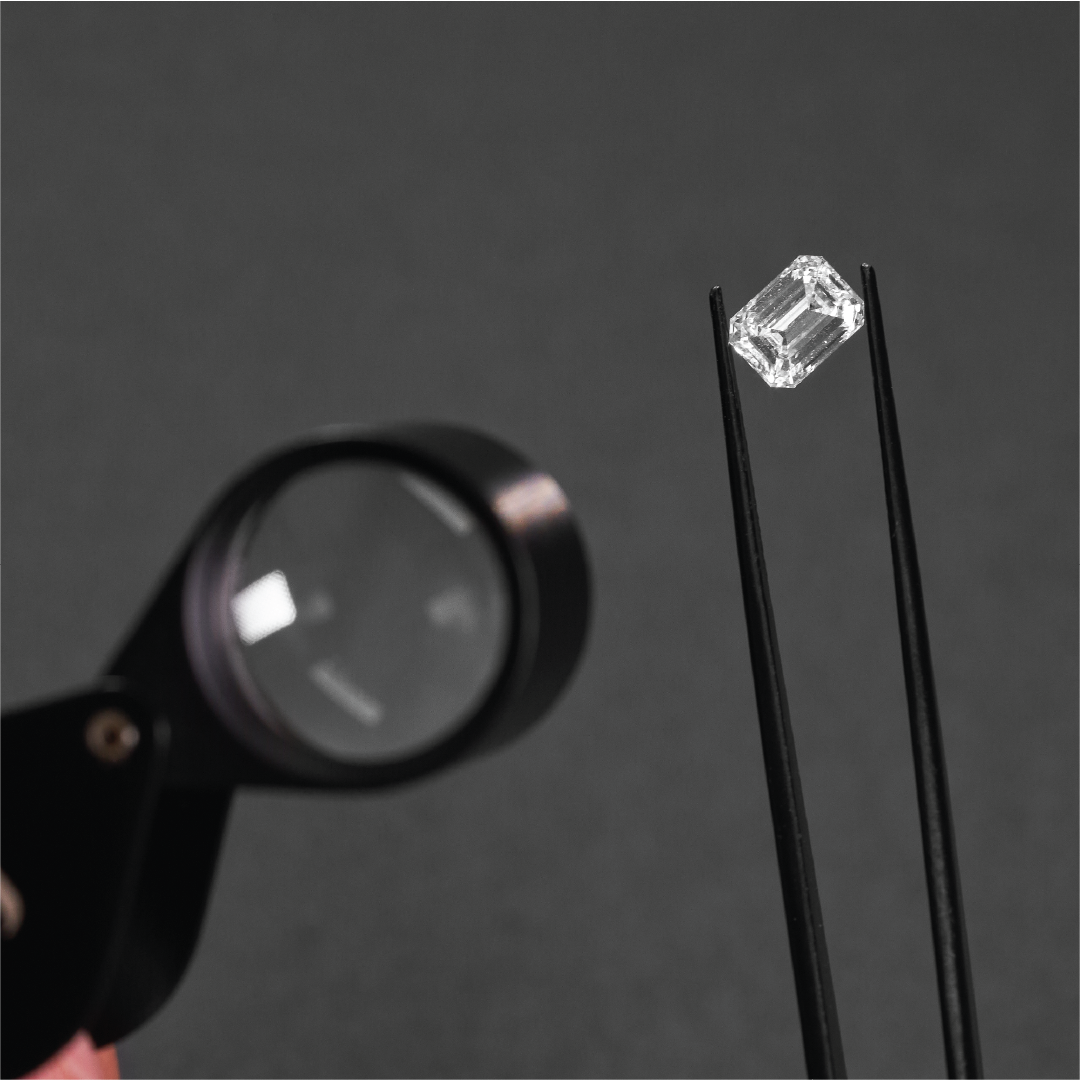In diamonds the term clarity refers to the absence of internal imperfections (known as inclusions) and surface defects (known as blemishes). Clarity is one of the 4Cs (Color, Clarity, Cut and Carat Weight) used to evaluate the quality and value of a diamond.
The clarity grade of a diamond is determined by the size, number, position, nature, and color of these characteristics, as they can affect the diamond's appearance and its ability to reflect light.

Diamond clarity is classified according to the GIA scale of 11 grades. At AJ Jewels we only select diamonds belonging to the top quality grades ranging from FL/IF to VS1-VS2, meaning that not even the smallest inclusion is visible to the naked eye.

The Gemological Institute of America (GIA) has established a standardized clarity grading scale that is widely used in the diamond industry:
Flawless (FL):
No inclusions or blemishes visible under 10x magnification.
Internally Flawless (IF):
No inclusions visible under 10x magnification, only minor blemishes.
Very, Very Slightly Included (VVS1 and VVS2):
Inclusions are so slight they are difficult for a skilled grader to see under 10x magnification.
Very Slightly Included (VS1 and VS2):
Inclusions are observed with effort under 10x magnification but can be characterized as minor.
Slightly Included (SI1 and SI2):
Inclusions are noticeable to a skilled grader under 10x magnification.
Included (I1, I2, and I3):
Inclusions are obvious under 10x magnification and may affect transparency and brilliance
Rarity:
Higher clarity diamonds are rarer than those with many inclusions or blemishes. Diamonds that are graded as Flawless (FL) or Internally Flawless (IF) are exceedingly rare and, therefore, command premium prices. The rarity of high-clarity diamonds makes them more desirable to collectors and those seeking luxury items, driving up their value.
Aesthetic Appeal:
Diamonds with fewer and smaller inclusions tend to be more brilliant and have better fire because there are fewer obstacles to interfere with the passage of light through the stone. This increased brilliance and sparkle make high-clarity diamonds more appealing to consumers, which in turn can increase their market value.
Size and Visibility of Inclusions:
The size, number, color, and location of inclusions can impact a diamond's clarity grade and, by extension, its value. Inclusions that are large, nu- merous, or located in prominent places where they affect the stone's transparency or brilliance can significantly reduce a diamond's value. Conver- sely, diamonds with inclusions that are microscopic, few in number, or strategically located (where they can be hidden by a setting)
might not be significantly devalued.
Here, we present three diamonds with identical characteristics in terms of Cut (Excellent), Carat Weight (2ct), and Color (G).
Our focus now shifts to the variable that sets them apart: the clarity.

*Reference value, based on the Rapaport Price List, for comparative purposes.
The video will expand once pressed play
